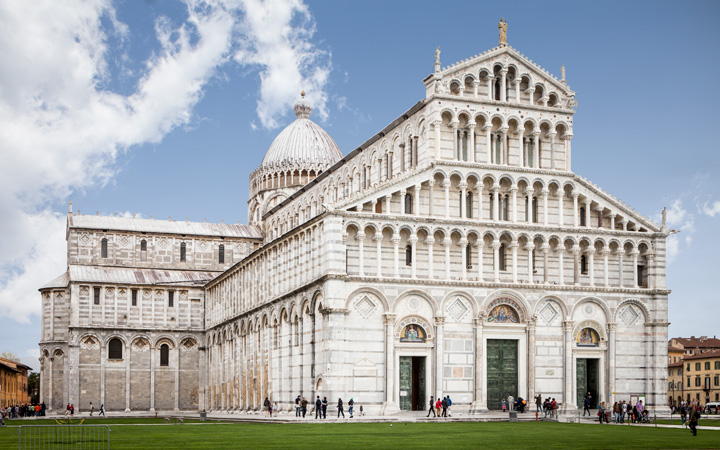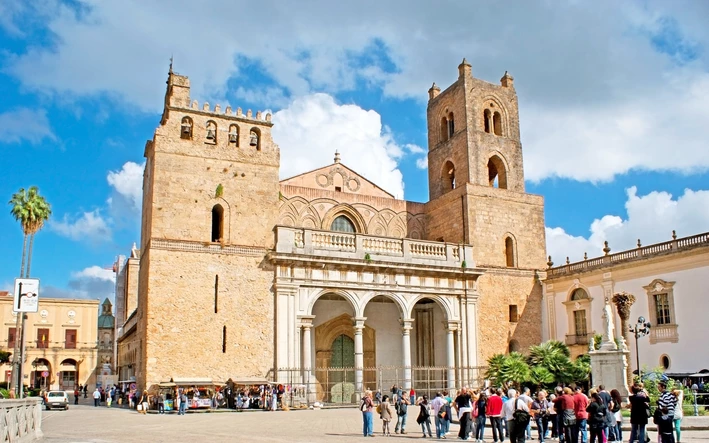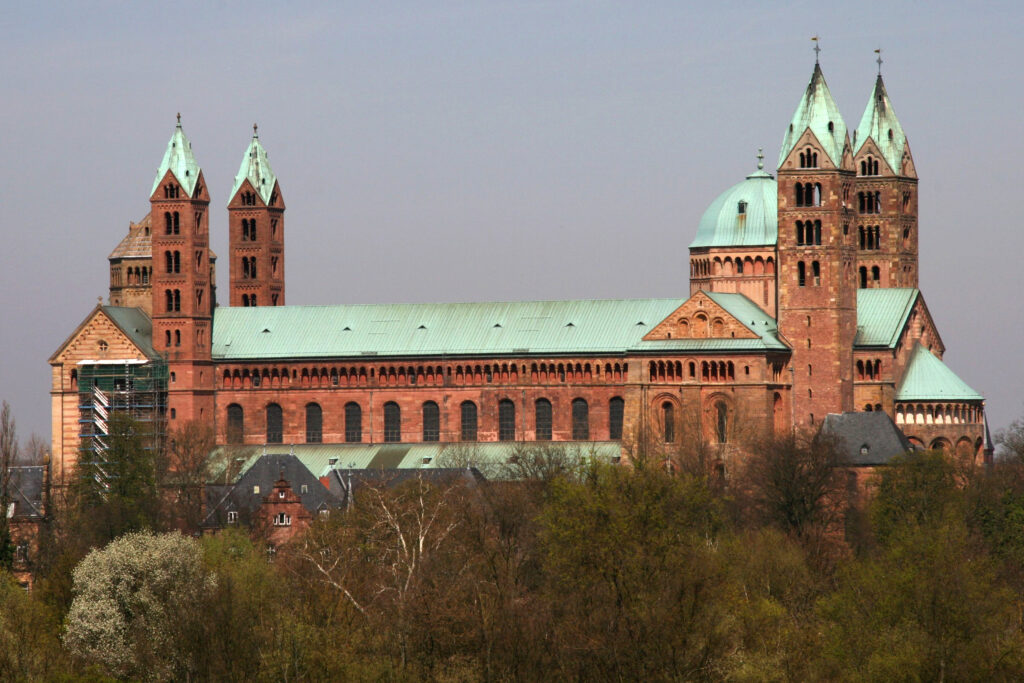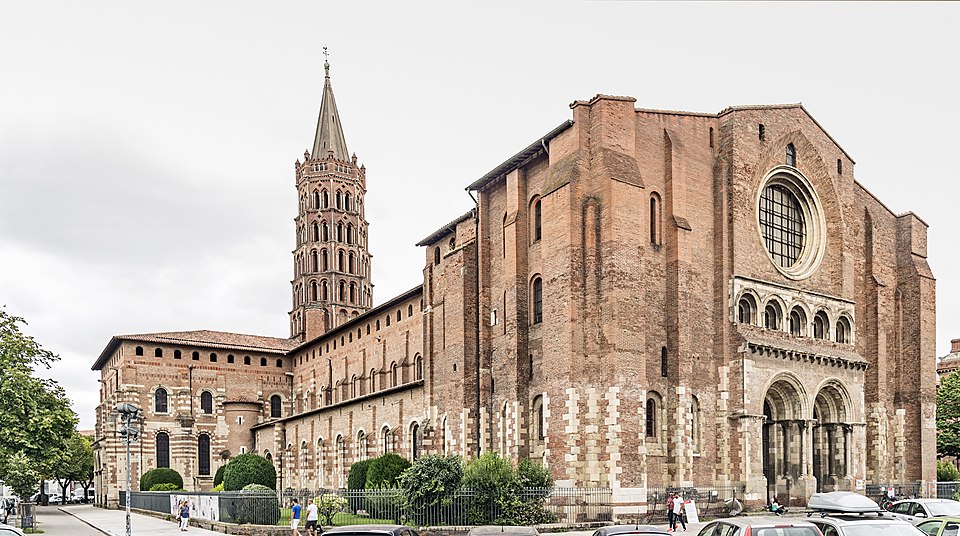Romanesque architecture is a prominent architectural style that developed in medieval Europe around the 10th century. It is known for its massive walls, rounded arches, sturdy pillars, and symmetrical plans. This style marked a transition from the simpler designs of early Christian buildings to the more complex and monumental forms that would later evolve into Gothic architecture. Romanesque churches and monasteries were designed to express strength, stability, and divine order.
Definition of Romanesque Architecture

The term romanesque architecture refers to a medieval European style that draws heavily from ancient Roman engineering, particularly in its use of barrel vaults and rounded arches. It introduced new medieval elements such as massive stone walls, large towers, and small, high windows to create structures that were both defensive and sacred. This style was predominantly used in churches, monasteries, and castles, reflecting the Church’s rising power during the Middle Ages. With its focus on durability, symmetry, and spiritual strength, Romanesque architecture continues to influence modern design—especially in projects like interior architecture services in San Diego offered by Navilize.
Timeline of Romanesque Architecture
The rise of romanesque architecture began around 950 AD and lasted until the early 12th century, just before the emergence of Gothic architecture. The style spread across Western Europe, especially in France, Germany, Italy, and Spain. Notable buildings like the Abbey of Cluny and the Speyer Cathedral were constructed during this time. Each region developed its own variations, but all retained the core Romanesque elements of solidity and rounded forms.

Romanesque Architecture Characteristics
Typical features of romanesque architecture include semi-circular arches, thick walls, small high windows, and sculptural decoration around portals and capitals. Interiors were dimly lit due to narrow window openings, creating a solemn and introspective atmosphere. Exteriors often had large towers and geometric designs. These elements collectively conveyed a sense of protection and permanence, perfectly suited to the religious and defensive needs of the time.
What are the Best Romanesque Buildings?
Some of the best examples of romanesque architecture include Speyer Cathedral in Germany, Cluny Abbey in France, Pisa Cathedral in Italy, and Santiago de Compostela Cathedral in Spain. These buildings reflect the style’s thick walls, rounded arches, and massive forms, representing the religious and cultural power of medieval Europe and the architectural transition toward the Gothic era.
1. Pisa Cathedral – Pisa, Tuscany, Italy

Pisa Cathedral is a prime example of romanesque architecture in Italy. Its marble façade, rounded arches, and arcaded galleries showcase the elegance of the romanesque style, blending religious grandeur with classical Roman influences. Construction began in 1063 under the direction of architect Buscheto, and it was consecrated in 1118, with later expansions by Rainaldo. The facade features alternating bands of white and dark marble, a hallmark of Pisan Romanesque, inspired by Roman and Byzantine designs. Inside, the cathedral boasts granite columns sourced from the island of Elba, a wooden coffered ceiling with intricate paintings, and a pulpit by Giovanni Pisano that exemplifies the transition to Gothic elements. As part of the Piazza dei Miracoli (a UNESCO World Heritage site), it symbolizes the maritime republic of Pisa’s wealth and power during the 11th and 12th centuries, drawing pilgrims and tourists alike to admire its harmonious proportions and symbolic decorations.
2. Cathedral of Monreale – Monreale, Sicily, Italy

The Cathedral of Monreale combines romanesque architecture with Byzantine and Arab-Norman elements. Its ornate mosaics and massive structure reflect the diverse expression of the romanesque style in southern Italy. Built between 1174 and 1189 under King William II of Sicily, the cathedral was designed by architects blending Norman, Byzantine, and Islamic influences, resulting in a unique hybrid style. The exterior features two towering bell towers and pointed arches influenced by Arab design, while the interior is famous for over 6,000 square meters of golden mosaics depicting biblical scenes, created by Byzantine artisans. The cloister, with its 108 pairs of columns adorned with intricate capitals, represents the pinnacle of medieval craftsmanship. As a UNESCO World Heritage site, it highlights Sicily’s cultural crossroads during the Norman kingdom, serving as a testament to religious tolerance and artistic fusion in the 12th century.
3. San Miniato al Monte – Florence, Tuscany, Italy

San Miniato al Monte is one of Florence’s finest examples of romanesque architecture, known for its geometric marble façade and harmonious proportions—hallmarks of the early romanesque style in Tuscany. Dedicated to Saint Minias, the church was constructed between 1013 and 1090, drawing from classical Roman basilicas with its green and white marble inlay creating intricate geometric patterns on the facade. The interior features a raised presbytery over a crypt, frescoes from the 13th century, and a zodiac pavement mosaic symbolizing medieval cosmology. Perched on a hill overlooking Florence, it offers panoramic views and has been a site of pilgrimage, influencing later Renaissance architects like Brunelleschi. Its balanced design, with a bell tower added in the 16th century, embodies the spiritual and aesthetic ideals of Tuscan Romanesque, making it a key monument in the region’s architectural history.
4. Speyer Cathedral – Speyer, Rhineland-Palatinate, Germany

As one of the largest Romanesque churches in the world, Speyer Cathedral defines German romanesque architecture. Its barrel vaults and monumental scale express the strength and authority of the romanesque style. Founded in 1030 by Emperor Conrad II and consecrated in 1061, it was expanded under Henry III and IV, featuring a length of over 130 meters and a crypt housing the tombs of Salian emperors. The facade includes dwarf galleries and rounded arches, while the interior’s groin vaults were innovative for their time, allowing for larger spaces. A UNESCO World Heritage site since 1981, it symbolizes the Holy Roman Empire’s power and has survived fires, wars, and reconstructions, including a 19th-century restoration that preserved its Romanesque core while adding neo-Romanesque elements.
5. Basilica of Saint-Sernin – Toulouse, Occitanie, France

The Basilica of Saint-Sernin is a major pilgrimage church and a jewel of French romanesque architecture. With its radiating chapels and robust structure, it represents the spiritual power of the romanesque style. Built from 1080 to 1120 on the site of a 4th-century basilica, it honors Saint Saturnin and features a five-aisled nave, the largest Romanesque church in France. The octagonal bell tower, with its tiers of arches, and the sculpted portals depicting biblical scenes showcase Occitan Romanesque artistry. As part of the UNESCO-listed Routes of Santiago de Compostela, it attracted medieval pilgrims, and its brick construction reflects local materials, influencing later Gothic developments in the region.
6. Trier Cathedral – Trier, Rhineland-Palatinate, Germany

Trier Cathedral is the oldest church in Germany and a powerful symbol of romanesque architecture. Its fortress-like design, thick walls, and semicircular arches showcase the core elements of the romanesque style. Originating from a 4th-century Roman basilica built by Constantine, it was rebuilt in the 11th and 12th centuries, incorporating Roman bricks and featuring a westwork with twin towers. The interior houses relics like the Holy Robe, drawing pilgrims, and its cloister and treasury add to its historical layers. As a UNESCO site, it represents the continuity from Roman to medieval architecture, surviving invasions and serving as a model for Rhenish Romanesque buildings.
7. Maria Laach Abbey – Andernach, Rhineland-Palatinate, Germany
Maria Laach Abbey is a well-preserved monastery reflecting the symmetry and calm beauty of romanesque architecture. Its towers and rhythmic arcades embody the balanced and spiritual qualities of the romanesque style. Founded in 1093 by Count Palatine Henry II and completed around 1216, the abbey church features six towers, a paradisiacal atrium, and intricate capitals carved with mythical creatures. The interior’s frescoes and the tomb of the founder highlight Benedictine monastic life. Set by Laacher See lake, it remains an active abbey and a prime example of Ottonian and Salian Romanesque, influencing German ecclesiastical design with its harmonious proportions.
8. Ca’ Loredan and Ca’ Farsetti – Venice, Veneto, Italy
These palaces in Venice are early examples where romanesque architecture meets Venetian elements. Their arched windows and stone façades reflect the transitional nature of the romanesque style in northern Italy. Built in the 12th and 13th centuries along the Grand Canal, Ca’ Loredan features Byzantine-influenced arches and mullioned windows, while Ca’ Farsetti has a similar design with loggias. Owned by noble families, they now house municipal offices. Their waterfront location and use of Istrian stone exemplify Venetian Romanesque, blending Eastern influences with local maritime aesthetics, paving the way for Gothic Venetian palaces.
9. Church of the Holy Sepulchre – Jerusalem, Israel

A sacred Christian site, the Church of the Holy Sepulchre features structural elements of romanesque architecture such as rounded arches and thick stone walls. Its religious significance enhances its romanesque style presence. Originally built in the 4th century by Constantine, the current structure dates to the 11th-12th centuries after Crusader reconstructions, including a Romanesque facade and rotunda over Christ’s tomb. Managed by multiple denominations, it includes the Calvary chapel and Anastasis rotunda. As Christianity’s holiest site, it draws millions, embodying the fusion of Byzantine and Crusader Romanesque in the Holy Land.
10. Lund Cathedral – Lund, Scania, Sweden
Lund Cathedral is a leading example of romanesque architecture in Scandinavia. Its twin towers, stone carvings, and heavy structure embody the austere yet majestic romanesque style of the north. Consecrated in 1145, it was built from sandstone under Danish rule, featuring a crypt with twisted columns and an astronomical clock from the 15th century. The apse and transepts showcase Lombard influences, while sculptures depict biblical figures. As Sweden’s oldest cathedral, it was a center of learning and now a Lutheran church, representing the spread of Romanesque from continental Europe to the Nordic regions.
11. Cefalù Cathedral – Cefalù, Sicily, Italy
Commissioned by Norman kings, Cefalù Cathedral blends Arab-Norman and romanesque architecture. The building’s solid forms and semicircular arches display the distinct Sicilian take on the romanesque style. Started in 1131 by Roger II and completed in the 13th century, it features twin towers flanking a portico and interior mosaics of Christ Pantocrator by Byzantine masters. The structure uses local stone, with influences from Islamic pointed arches. A UNESCO site, it overlooks the sea and symbolizes Norman Sicily’s cultural synthesis, serving as a burial place for Roger II.
12. Parma Cathedral – Parma, Emilia-Romagna, Italy
Parma Cathedral features stunning frescoes and a Romanesque plan. The interior’s barrel vaults and sculpted capitals represent the artistic richness of Italian romanesque architecture and its elegant romanesque style. Consecrated in 1106, it was rebuilt after an earthquake, with a facade of pink Verona marble and a bell tower added later. The dome fresco by Correggio (16th century) blends with Romanesque elements like the Lion Portal sculptures by Benedetto Antelami. Dedicated to the Assumption of Mary, it houses relics and exemplifies Emilian Romanesque, influencing regional art and architecture.
13. Vézelay Abbey – Vézelay, Burgundy, France
Vézelay Abbey is a UNESCO-listed site and a fine example of French romanesque architecture. Its wide nave, symbolic sculptures, and harmonious proportions are classic to the romanesque style of pilgrimage churches. . Founded in the 9th century and rebuilt from 1120-1140, it honors Mary Magdalene with tympanum sculptures depicting the Last Judgment. The nave’s groin vaults and capitals with biblical scenes showcase Burgundian artistry. As a starting point for the Way of St. James, it hosted Crusader preachings and remains a spiritual center, embodying Cluniac reforms in Romanesque design.
14. Aachen Cathedral – Aachen, North Rhine-Westphalia, Germany
While its core is Carolingian, later additions at Aachen Cathedral reflect early romanesque architecture. The octagonal plan and rounded arches influenced the development of the romanesque style in central Europe. Built by Charlemagne in 805 and expanded in the 10th-12th centuries, it features the Palatine Chapel with bronze doors and a throne. Coronation site for Holy Roman Emperors, its dome and galleries blend Byzantine and Romanesque elements. A UNESCO site, it houses Charlemagne’s relics and symbolizes imperial power, with Gothic additions enhancing its layered history.
15. Tower of London – London, England, United Kingdom
Originally built by William the Conqueror, the Tower of London exemplifies romanesque architecture in military design. Its massive stone walls and rounded windows reflect the defensive side of the romanesque style. The White Tower, constructed around 1078, features thick walls up to 15 feet, corner turrets, and a chapel with Norman arches. Expanded over centuries, it served as a fortress, palace, and prison, housing the Crown Jewels today. As a UNESCO site, it represents Norman conquest architecture, influencing English castle design with its keep’s imposing presence.
Romanesque Architecture’s Legacy
The legacy of romanesque architecture is seen in its enduring impact on European design. Its thick walls, rounded arches, and symbolic form laid the groundwork for the Gothic style. Many romanesque buildings—especially churches and castles—still stand today, reflecting a tradition of strength, structure, and spiritual depth that continues to inspire architecture worldwide.

Conclusion
Romanesque architecture stands as a foundation of medieval European design, known for its strength, symmetry, and spiritual depth. With features like rounded arches and thick stone walls, the romanesque style influenced centuries of construction. Its enduring presence in churches, abbeys, and fortresses highlights a legacy that continues to shape architectural thought and inspire modern interpretations.
Lets See our project
Check out the rest of the Contessa Vineyard project review video on YouTube by navilize.
Navilize Youtube: @NavilizeDesignStudio
Romanesque architecture is admired for its solid walls, rounded arches, and spiritual simplicity, marking a key era in medieval European design. It laid the foundation for the later Gothic style and can still be seen in iconic buildings like Pisa Cathedral and Speyer Cathedral. Today, this timeless aesthetic continues to inspire modern interpretations. If you’re passionate about classic styles blended with contemporary creativity, Navilize is a leading destination. Navilize offers expert insight into architectural heritage while shaping innovative, functional, and elegant spaces—bridging history with modern design for those who value both tradition and transformation.






